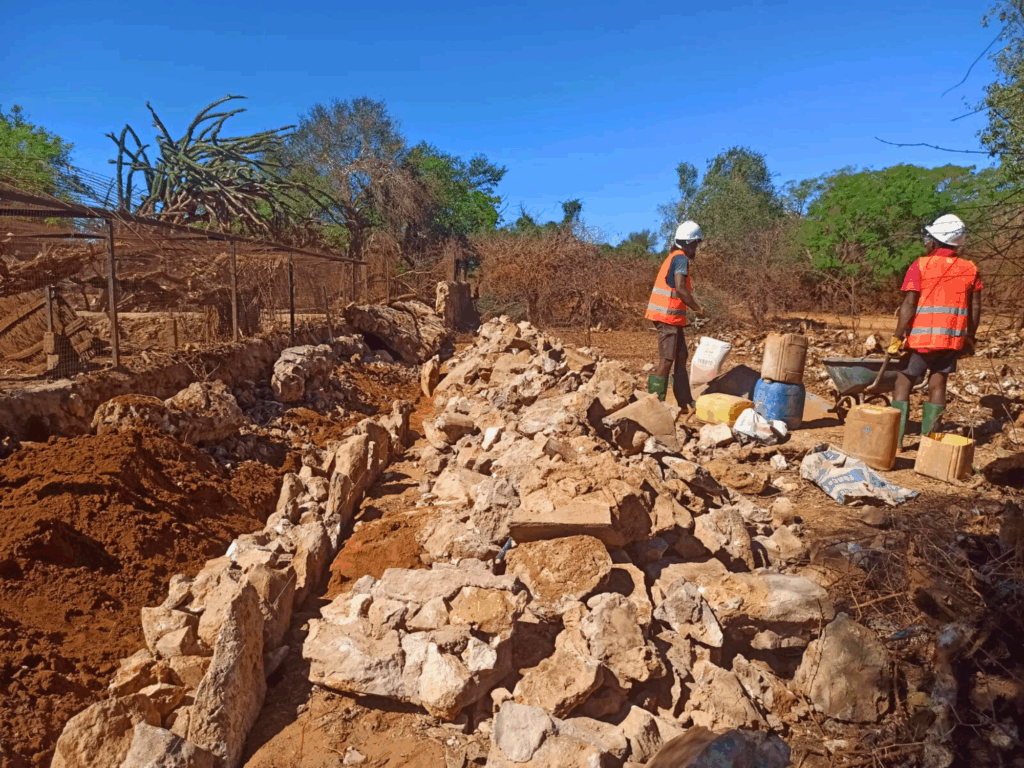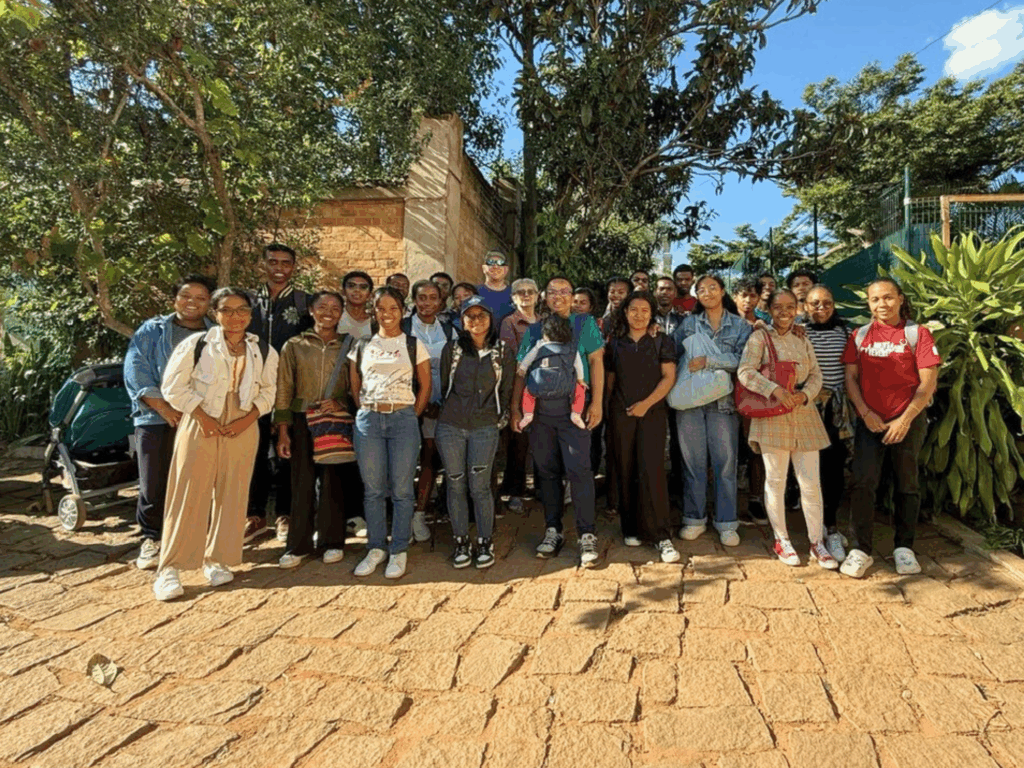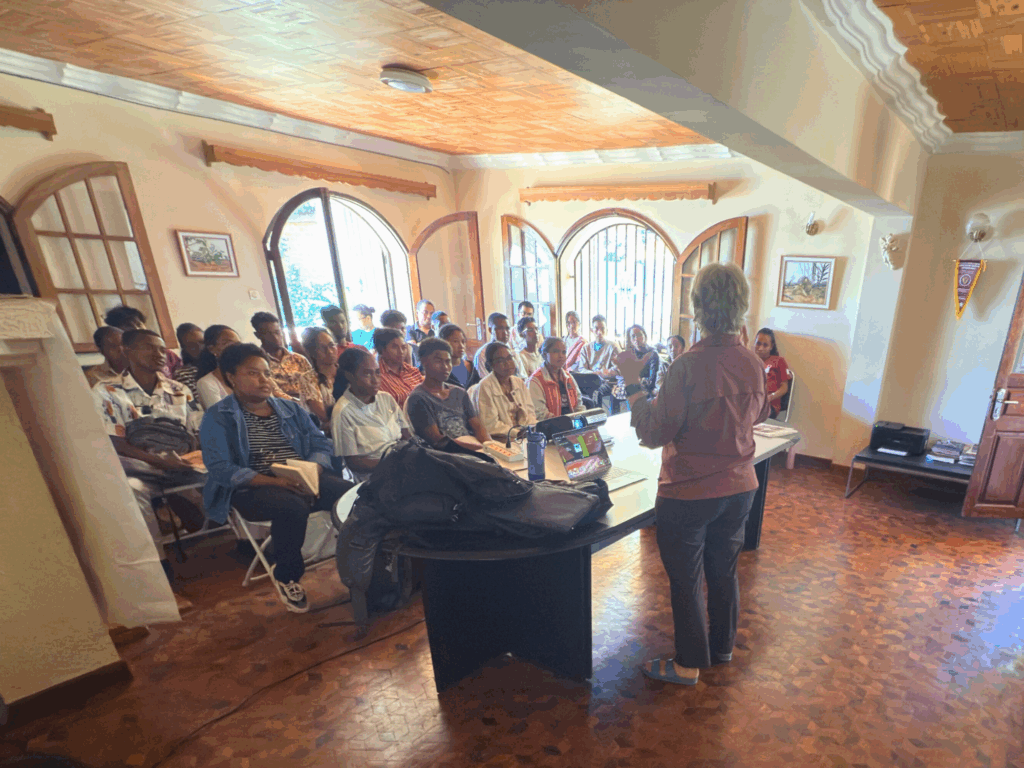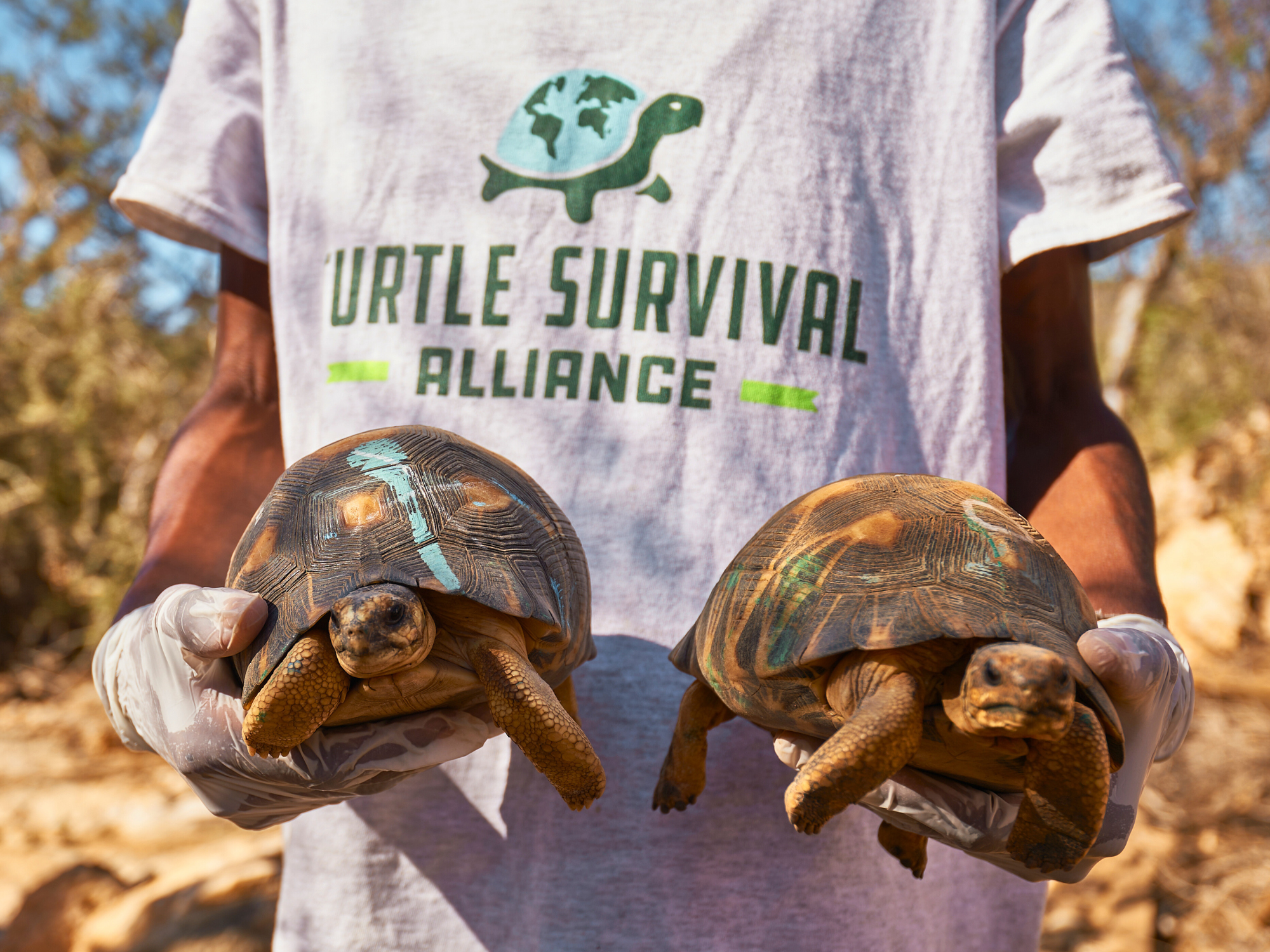By Jordan Gray, Tsanta Fiderana Rakotonanahary, and Hery Lova Razafimamonjiraibe
It’s hard to believe that more than two months have passed since the third tropical cyclone, Honde, inundated our Lavavolo Tortoise Center in southwestern Madagascar. Situated just ¾ of a mile (1.2 km) inland, the Center has been—this year in extraordinary fashion—at the mercy of weather patterns driven by the Indian Ocean. After all, Madagascar is an island nation, vulnerable to the whims of powerful storms that brew offshore.
Prior to Cyclone Honde, two earlier storms—Cyclone Dikeledi on January 16 and Cyclone Elvis on January 28—also struck and engulfed the Center. The rapid succession of these powerful storms is highly uncommon and has not been witnessed since the Center was established. For a region already vulnerable to environmental extremes, this year’s events stand out as both a warning and a call to action.
And yet, in the aftermath of this year’s catastrophic cyclones, the Lavavolo Tortoise Center (LTC) has once again become a symbol of resilience and unity—much as it did seven years ago this month, when it rose from the ground in response to two major confiscations totaling more than 17,000 tortoises. What began as a devastating blow to our infrastructure, the thousands of Radiated (Astrochelys radiata) and Spider (Pyxis arachnoides) tortoises in our care, and the well-being of our staff and surrounding community, has sparked an outpouring of local and international support, as communities and partners have come together to rebuild—rock by rock, tortoise by tortoise.

Local communities have been working hand-in-hand with Turtle Survival Alliance, not only providing essential materials like wood and palm fronds for shading structures but also physically helping to clear rocks from enclosures and make space for the tortoises. Their efforts have been critical, from rebuilding the fences washed away by the floods to clearing the well, ensuring clean water is available to both tortoises and people. Slowly, we are restoring electricity, bringing in satellite internet to improve communication, putting up new pen dividers, and building necessary infrastructure like storage rooms, staff housing, and a temporary office.
In light of recent flood events, the Turtle Survival Alliance is actively enhancing the Lavavolo Tortoise Center by extending its presence to higher ground and implementing measures to elevate buildings and infrastructure. The Commune of Itampolo, alongside neighboring communities, has endorsed the reconstruction initiative, which includes the construction of elevated structures to safeguard against future flooding events. The completion of the official ceremony in March marks a significant milestone in these efforts.

While reconstruction is underway, our team is taking every step to minimize stress to the tortoises. Enclosures, once cluttered with flood-borne rocks, are being cleared or backfilled as needed. Sand is being added to select pens to accommodate the Spider Tortoises as they prepare to burrow in for the winter. Large shade nets are now in place to provide temporary cover until more permanent structures are built. Throughout this process, our priority remains the health and well-being of the tortoises. Veterinary teams are conducting continuous health assessments, providing targeted treatments, and closely monitoring each individual. Animals affected by flood-related injuries, illness, or stress are receiving individualized care, including controlled feeding and hydration to stabilize their condition.
At the same time, we’re ensuring that our staff and their families are not left behind in this recovery. Their homes were hit just as hard, and their needs—from food and shelter to medical support—are being prioritized. Their strength and stability are vital for the continued recovery of the center, and we’re doing everything we can to support them, just as they are supporting the tortoises.
On March 31st, with the help of local authorities and community members, we conducted an official post-flood count. Each animal was assessed and treated accordingly. As part of our ongoing recovery plan, large juveniles are being readied for transfer to the Tortoise Conservation Center (TCC), our center of operations in the south, where they will begin the next steps toward reintroduction to the wild. With the dry winter months approaching—when temperatures average about 10° F (5° C) cooler than in summer—the tortoises are being fed more than usual to help them regain weight and strengthen their immune systems after two incredibly stressful months.

The numbers speak to both the scale of the disaster and the resilience of our response. Our initial post-cyclone count on January 15th recorded more than 13,000 tortoises alive, including nearly 12,000 Radiated Tortoises and over 500 Spider Tortoises. Since then, more than 1,000 tortoises have died as a direct result of the cyclone, with additional losses during the post-flood evaluation period. As of April 4th, the final count stands at over 11,500 tortoises—meaning more than 1,500 have been lost or are unaccounted for.
Our veterinary partners from the University of Antananarivo’s Department of Veterinary Sciences and Medicine have been instrumental throughout, deploying to LTC from January through April. Their dedication has been unwavering, offering not only their expertise but the continuity of care so critical in a crisis like this. They’ve helped ensure the tortoises are healthy and strong enough to withstand eventual relocation—although, for now, the roads remain too rough for safe transport.
In tandem with hands-on care, international veterinarians are helping build the future of tortoise conservation in Madagascar. In recent weeks, lectures were held at our office for 28 veterinary students from the University of Antananarivo, led by Dr. Sean Perry from the Mississippi Aquarium and Dr. Bonnie Raphael from Turtle Survival Alliance’s Chelonian Health team. These sessions covered everything from basic biosecurity and anatomy to emergency triage and advanced diagnostic techniques like hematology, histopathology, and biochemistry. For many of the students, this was their first exposure to techniques not yet available in Madagascar—an invaluable step forward for local capacity building.


Though the road ahead remains long and uneven—both literally and figuratively—the commitment to recovery is unwavering. No tortoise is being left behind—and neither is any member of our team. What began as a disaster has become a powerful reminder of the strength found in community, compassion, and the shared belief that every tortoise counts. This message is echoed in the incredible outpouring of international support we’ve received in response to this crisis.
Turtle Survival Alliance thanks the Ministère de l’Environnement et du Développement Durable (Ministry of Environment and Sustainable Development), Gendarmerie Nationale (National Gendarmes), mayors of the communes of Itampolo, Marovato, and Nikoly, the community members of Itampolo and Lavavolo, and Turtle Survival Alliance partners and donors.
Header image: Radiated Tortoises at the Tortoise Conservation Center in Madagascar. Photo by Andry Fandresena
###
Turtle Survival Alliance is incredibly thankful to all those individuals and organizations who supported us during this crisis with gifts of $1,000 USD or more. Listed in alphabetical order, they are:
- Aktionsgemeinschaft Artenschutz (AGA) e.V.
- Dr. Allison Alberts
- Animal Survival International
- Aquazoo Löbbecke Museum
- Australasian Society of Zoo Keeping
- AZA Chelonian Taxon Advisory Group
- Brevard Zoo
- British Chelonia Group
- Bruce Weissgold
- Carol Wilen
- Critical Ecosystem Partnership Fund (CEPF)
- Douglas Trainor
- Ed Neil
- Erin and Matt Patterson
- Gary Larson
- Haus des Meeres Aqua Terra Zoo
- Houston Zoo, Inc.
- Howells Family Fund
- International Fund for Animal Welfare (IFAW)
- Jeff Mace
- John Ball Zoo
- Joshua Dale and Ilana Miller
- Justin Congdon and Nancy Dickson
- Linda Stein
- Little Ray’s Reptile Zoo
- Magnetic Hill Zoo
- Maryland Zoo
- Merck Animal Health
- North Carolina Zoological Society
- Oklahoma City Zoo & Botanical Garden
- Parken Zoo
- Phoenix Zoo (Arizona Center for Nature Conservation)
- Pilsen Zoo
- Riverbanks Zoo & Garden
- Stahl Exotic Animal Veterinary Services
- Sy Montgomery and Howard Mansfield
- The Daniel & Nicole Voss Charitable Fund
- Turtle Back Zoo (Zoological Society of New Jersey)
- Virginia Zoo in Norfolk
- William and Jeanne Dennler
- Zoo Atlanta
- Zoo Knoxville
- Zoofari Parks, LLC
